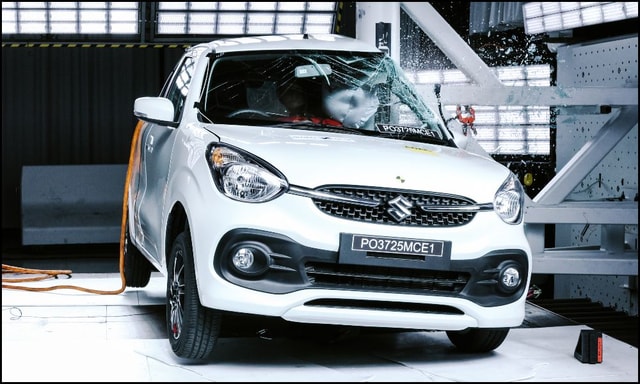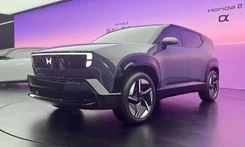Types Of Batteries Used In Electric Vehicles & Their Parameters

- Lithium-ion batteries are the most commonly used electric car batteries.
- Hybrid nickel-metal batteries are only used for hybrid cars yet.
- SLA or Lead-Acid batteries have a life span of only 3 years.
In the last couple of years, almost every industry has seen some kind of innovative technology revolutionize it. Similarly, in the automobile industry, this change was brought about by battery-powered cars.
Considering the pollution caused by conventionally powered cars, this industry did not take long to adapt to the changes brought by electric motors. Over time, quite a few types of batteries have been used for electric cars, Lithium-ion being the most common one. Here mentioned are a few characteristic traits of each type of battery used in an electric car.

Lithium-ion Battery:
This is the most widely used electric car battery in the industry. You might already be familiar with it because smaller versions of this are used in portable devices like mobile phones and even laptops. However, the ones used in cars are much bigger and have a higher capacity, often being referred to as traction battery packs.
Lithium-ion batteries have an immensely high power-to-weight ratio, making the cars highly energy efficient. The battery performs quite better than others at high temperatures as well. This is mainly used due to its energy per weight ratio, which is an important consideration in electric car batteries.
In other words, the smaller the weight of the battery, the further the car can drive on a single charge. The battery also has a low self-discharge level, meaning it is better able to maintain its charge when compared to the other alternatives. In addition to that, most components of the Li-ion batteries can get recycled. This is a bonus for electric cars since they are made with the main motive of saving the environment. These are mainly used in PHEV and BEV cars.
Parameters:
- Mass energy Density: 100-180 Wh/kg
- Volume Energy density: 200-300 Wh/L
- Power Density: 1000-1500 W/kg
- Self-Discharge rate: 1-5% per month

Hybrid Nickel-Metal (NIMH) battery:
Another variant of electric cars is hybrid cars which contain both battery-powered and fuel-powered engines. These are the cars that mainly use NIMH batteries, but these batteries are also compatible with BEV cars. These kinds of batteries do not require any outer power source to charge.
The charging of the battery mainly depends on the regenerative braking, speed, and wheels of the car. When compared to Li-ion batteries, NIMH batteries have a better life cycle and are safer in case of intolerant use.
However, these batteries have a higher self-discharge rate, are much more expensive, and generate considerable amounts of heat in high temperatures, which is quite common in a car. These few shortcomings make NIMH a lesser chosen option for a car whose batteries need to be charged from an outer source. This is also the main reason these batteries are used in hybrid cars.
Parameters:
- Mass energy Density: 40-120 Wh/kg
- Volume Energy density: 140-400 Wh/L
- Power Density: 300-1000 W/kg
- Self-Discharge Rate: ~30% per month
Lead-Acid Battery:
SLA or lead-acid is one of the oldest kinds of rechargeable batteries. When compared to NIMH or lithium batteries, these are a lot heavier and lose capacity eventually. However, the main reason automobile companies still use it is its cheap pricing. In addition to that, since they have been used for the longest time, the technology around the fitting and using the batteries more effectively has also evolved, which makes for a better end product. Nevertheless, SLA batteries are not yet found in consumer electric vehicles, although there are a few projects under development. The main use for this kind of battery is as a secondary storage system for commercial vehicles. Another good thing about these kinds of batteries is that they are recyclable.
Parameters:
- Mass energy Density:30-40 Wh/kg
- Volume Energy density:60-75 Wh/L
- Power Density:180 W/kg
- Self-Discharge rate:3-20% per month

These are some of the most commonly used electric car batteries that you should have an idea about. While it is not very necessary to know what kind of battery your fuel-powered car has, since electric cars run on batteries, this decision becomes important.
The electric vehicle industry is still growing and has a long way to go. This only makes room for the numerous innovations and experiments that are taking place in this field. If you are planning to be a part of this industry, the information present in this article can come in quite handy.
Trending News
 3 mins readWill The Kawasaki W230 Be Launched In India?
3 mins readWill The Kawasaki W230 Be Launched In India?
Latest News
 car&bike Team | Dec 23, 2025India Bike Week 2025 In Pictures: Highlights From Edition 12The 12th Edition of IBW was held on December 19 and 20, and if you missed this year’s festival, here is a recap of all that happened.3 mins read
car&bike Team | Dec 23, 2025India Bike Week 2025 In Pictures: Highlights From Edition 12The 12th Edition of IBW was held on December 19 and 20, and if you missed this year’s festival, here is a recap of all that happened.3 mins read Amaan Ahmed | Dec 23, 2025Tata To Enter Rs 40 Lakh Passenger Car Market With First Avinya Electric SUV In End-2026Set to be one of three EV launches from Tata Motors next year, the first in the Avinya series of electric vehicles will catapult the Pune-based carmaker into uncharted market territory, as it will be the most expensive Tata yet.1 min read
Amaan Ahmed | Dec 23, 2025Tata To Enter Rs 40 Lakh Passenger Car Market With First Avinya Electric SUV In End-2026Set to be one of three EV launches from Tata Motors next year, the first in the Avinya series of electric vehicles will catapult the Pune-based carmaker into uncharted market territory, as it will be the most expensive Tata yet.1 min read car&bike Team | Dec 23, 2025Will The Kawasaki W230 Be Launched In India?Kawasaki India has teased the W230 on its Instagram handle, indicating that the Kawasaki W230 may be in consideration for a launch in India.3 mins read
car&bike Team | Dec 23, 2025Will The Kawasaki W230 Be Launched In India?Kawasaki India has teased the W230 on its Instagram handle, indicating that the Kawasaki W230 may be in consideration for a launch in India.3 mins read Jaiveer Mehra | Dec 23, 2025Suzuki Fronx Secures One Star Safety Rating In ANCAP Crash Tests As Rear Seatbelt Fails During TestingThe Fronx scored less than 50 per cent points in both, adult and child occupant protection categories.1 min read
Jaiveer Mehra | Dec 23, 2025Suzuki Fronx Secures One Star Safety Rating In ANCAP Crash Tests As Rear Seatbelt Fails During TestingThe Fronx scored less than 50 per cent points in both, adult and child occupant protection categories.1 min read car&bike Team | Dec 23, 2025Final Jaguar F-Pace Rolls Of The Line: Production EndsThe Jaguar F-Pace marks the end of the brand’s internal combustion lineup, as the final model rolls off the line.2 mins read
car&bike Team | Dec 23, 2025Final Jaguar F-Pace Rolls Of The Line: Production EndsThe Jaguar F-Pace marks the end of the brand’s internal combustion lineup, as the final model rolls off the line.2 mins read car&bike Team | Dec 22, 2025Maruti Suzuki Celerio Secures Three-Star Rating In Global NCAP Crash TestsSix airbags-equipped model secured a three-star adult and two-star child occupant protection rating; the dual airbag model scored a two-star rating.3 mins read
car&bike Team | Dec 22, 2025Maruti Suzuki Celerio Secures Three-Star Rating In Global NCAP Crash TestsSix airbags-equipped model secured a three-star adult and two-star child occupant protection rating; the dual airbag model scored a two-star rating.3 mins read
 Seshan Vijayraghvan | Dec 23, 20252026 Kia Seltos Review: Formula Is Spot On, But Is The Timing Right?The 2nd-gen Kia Seltos has arrived, but it has the challenge of facing strong rivals like the Victoris and Sierra. The question is simple - Does it still have what it takes?9 mins read
Seshan Vijayraghvan | Dec 23, 20252026 Kia Seltos Review: Formula Is Spot On, But Is The Timing Right?The 2nd-gen Kia Seltos has arrived, but it has the challenge of facing strong rivals like the Victoris and Sierra. The question is simple - Does it still have what it takes?9 mins read Seshan Vijayraghvan | Dec 22, 20252026 Tata Harrier & Safari 1.5 Hyperion Review: By The Power Of Petrol!The new Tata Harrier and Safari petrol packs a new 1.5-litre TGDI Hyperion engine, but is it an ideal alternative to the diesel version?7 mins read
Seshan Vijayraghvan | Dec 22, 20252026 Tata Harrier & Safari 1.5 Hyperion Review: By The Power Of Petrol!The new Tata Harrier and Safari petrol packs a new 1.5-litre TGDI Hyperion engine, but is it an ideal alternative to the diesel version?7 mins read Bilal Firfiray | Dec 19, 2025Maruti Suzuki e-Vitara Review: Worth The Wait?After a long wait, the first-ever electric Maruti Suzuki is here. It’s the e-Vitara, and it comes with a few promises. But arriving this late, is it worth the wait? Or is it a case of too little, too late?9 mins read
Bilal Firfiray | Dec 19, 2025Maruti Suzuki e-Vitara Review: Worth The Wait?After a long wait, the first-ever electric Maruti Suzuki is here. It’s the e-Vitara, and it comes with a few promises. But arriving this late, is it worth the wait? Or is it a case of too little, too late?9 mins read Bilal Firfiray | Dec 18, 2025Mercedes-Benz G450d: The Subtle Power of EvolutionThe Mercedes-Benz G 450d evolves subtly with more power, improved efficiency, and modern tech, while staying true to the timeless G-Class design. And character.4 mins read
Bilal Firfiray | Dec 18, 2025Mercedes-Benz G450d: The Subtle Power of EvolutionThe Mercedes-Benz G 450d evolves subtly with more power, improved efficiency, and modern tech, while staying true to the timeless G-Class design. And character.4 mins read Janak Sorap | Dec 11, 2025Harley-Davidson X440 T First Ride Review: Smarter and SharperHarley-Davidson has taken the X440 and given it a more focused and engaging twist. The result is the X440 T—essentially the same platform but updated in areas that give the motorcycle more appeal and riders more thrill.5 mins read
Janak Sorap | Dec 11, 2025Harley-Davidson X440 T First Ride Review: Smarter and SharperHarley-Davidson has taken the X440 and given it a more focused and engaging twist. The result is the X440 T—essentially the same platform but updated in areas that give the motorcycle more appeal and riders more thrill.5 mins read































































































































